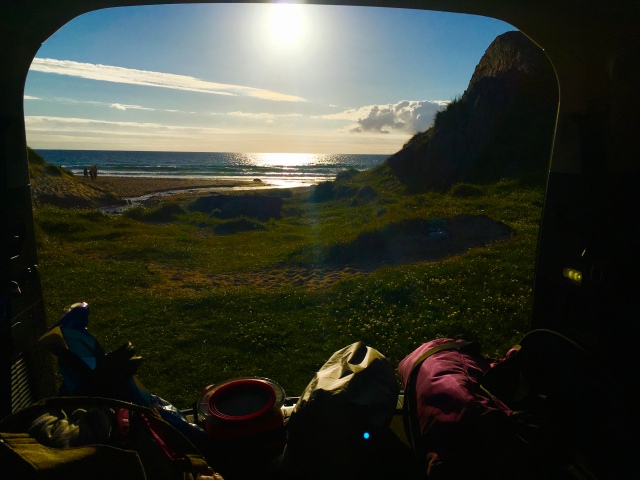When you study fish in Alaska, you may find yourself covered in slime. During one slime-intensive day, Duncan Green and his field assistant were wading in knee-deep ocean 200 feet offshore. They looked back to see a polar bear perched on the bed of the truck, sniffing around for helpless terrestrial mammals covered in delicious fish goo. In reality, the bear was probably just checking out the truck, but Duncan had to call for someone to drive out and scare the bear away before they could head back in. Just another day in the life of Duncan Green, fish biologist!

At the end of an exciting 2017 field season, 220 fish, including the illustrious Susan B. Anchovy and Edgar Allen Cod, were live-shipped on ice from the North Slope to the University of Alaska Fairbanks campus. Duncan studies broad whitefish (Coregonus nasus), an Arctic Alaskan species that is an important subsistence food for coastal villages like Kaktovik, Nuiqsut, and Utqiaġvik. Although it is well known that the Arctic is warming faster than other parts of the planet, it is not well understood how ecosystems will respond to this change. To add one small piece to this big puzzle, Duncan is investigating how warming waters may influence whitefish growth rates. Will Susan and Edgar grow big and healthy in warmer waters? Or might they be stressed by an environment that’s just too hot, inhibiting growth? Time, and the data, will tell.

Duncan is a well-rounded man. Beyond his identity as an aspiring fishy scientist, he is also a fat-tire biker (completed the White Mountains 100, a human-powered race through Alaska’s Interior), makes a mean pizza cake (fourteen layers of frozen pizza and pizza rolls, baked all together and topped with cream cheese frosting), and also ice fishes for fish for food. Itching to hear a classic cinematic monologue? Duncan delivers a moving recitation of Quint’s “Indianapolis” speech from the 1975 film Jaws. In short, Duncan is a most colorful person and adds a lot of life to any potluck, field expedition, or fish-naming production.










You must be logged in to post a comment.